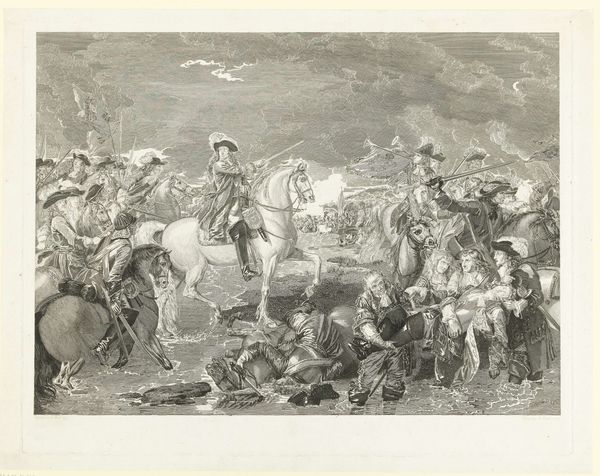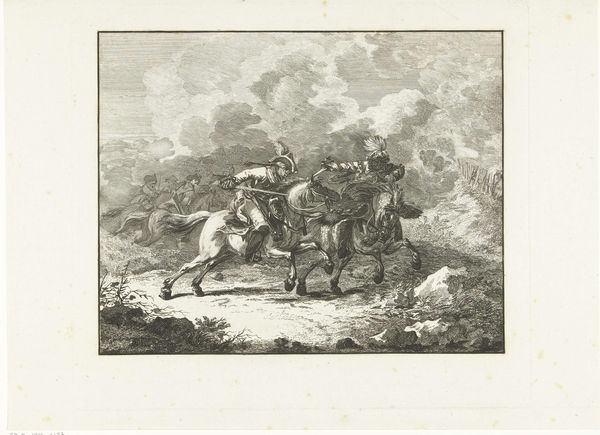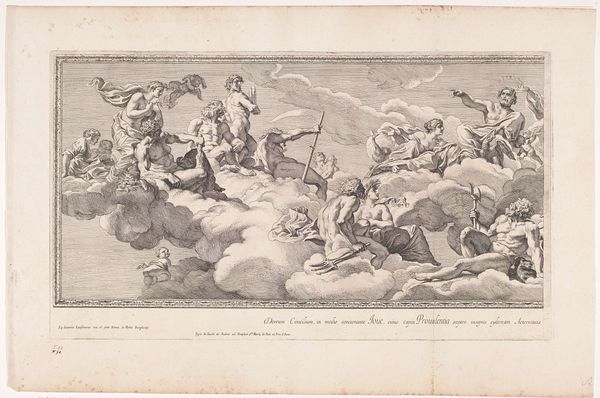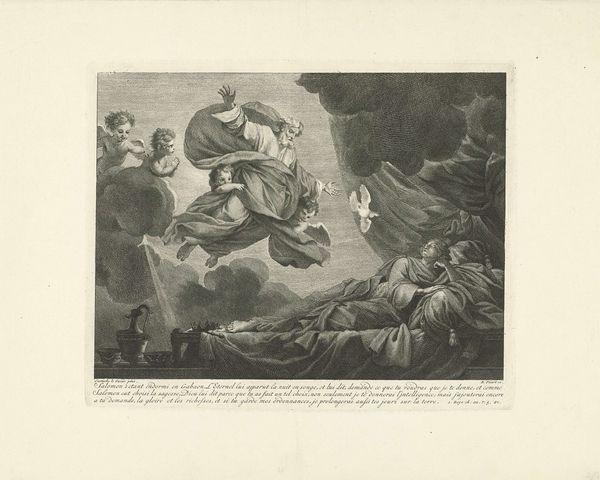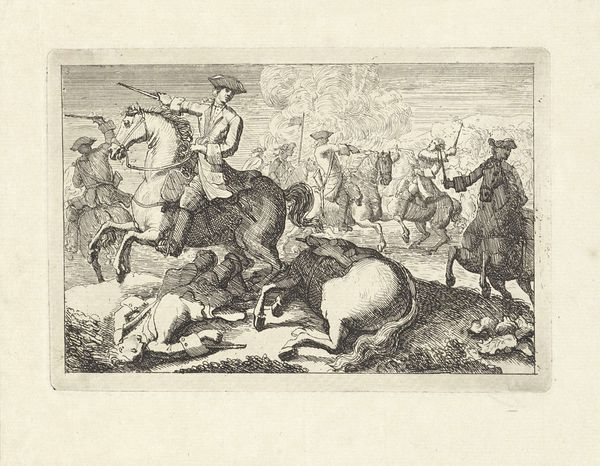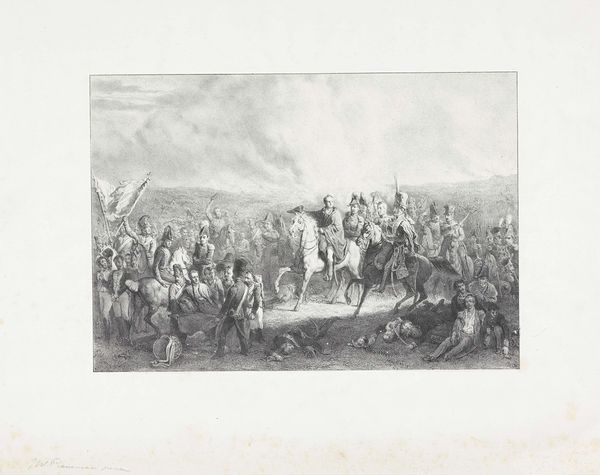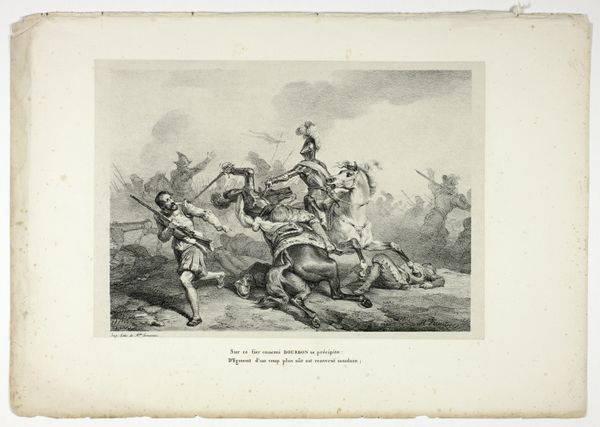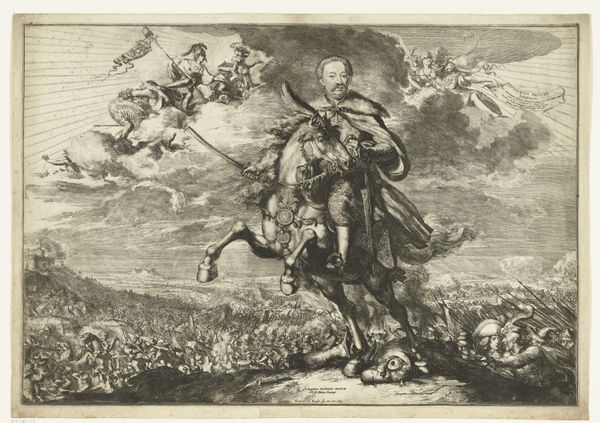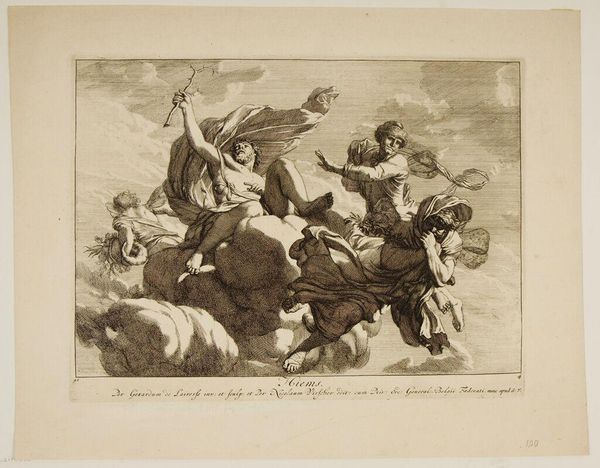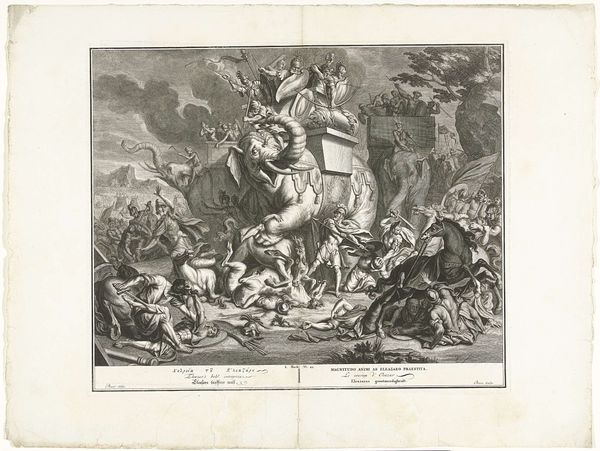
Dimensions: height 320 mm, width 596 mm
Copyright: Rijks Museum: Open Domain
Curator: Here we have Bernard Picart’s "Apotheose van Hercules," an engraving dating back to 1719, here in the Rijksmuseum. It’s a depiction of Hercules’ ascent to godhood. Editor: The first thing that strikes me is the energy; the upward thrust of the horses, the swirling clouds...it really conveys a sense of triumph and power, even in monochrome. Curator: Precisely. Consider the cultural context. In this period, Hercules, a Greco-Roman hero known for his strength and labors, would be interpreted through lenses of colonialism and expanding empires. His story can be read as justification for conquering, and even civilizing, other peoples. Editor: Absolutely. Beyond the socio-political reading, look at how Picart has employed symbolic imagery. The horses represent not just power, but also perhaps uncontrollable, earthly drives now being channeled towards the divine. And note the figures blowing trumpets! Curator: Yes, and Hercules himself being elevated, is very interesting, isn’t it? Think about the Baroque style itself as a language of power—a visual spectacle reinforcing hierarchies and projecting an image of authority onto the ruling elite of the time. Editor: The engraving medium itself, I think, adds another layer. Prints allowed images to be disseminated widely, turning visual ideas into a popular concept. Consider how engravings often circulated popular myths in the early days of mass media. Curator: Good point. The dissemination contributed to how Hercules becomes less a hero, but a symbol appropriated by colonizers to legitimate dominance and ideas about natural hierarchies, thus connecting art and broader social projects. Editor: The figures carry deep associations of course. Clouds often denote transcendence, and Hercules represents a concept of the idealized leader overcoming personal struggle, it's all meticulously represented. Curator: Indeed. This "Apotheosis" is both a celebration and a projection of very pointed ideologies. Editor: Seeing how the past is visualized tells us so much about how a culture wants to understand its present. I see this single work of art and so many other things come to my mind. Curator: Me too; I now question where Hercules really ascends to! Thank you for giving a space for these very interesting conversations.
Comments
No comments
Be the first to comment and join the conversation on the ultimate creative platform.
